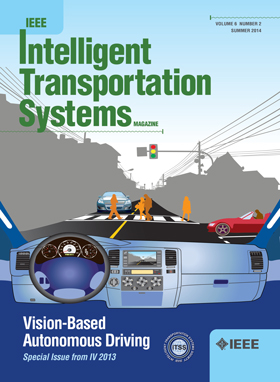Unsupervised Learning Approach for Risky Driving Behavior Identification on Expressways in C-ITS Environments
IF 7.9
1区 工程技术
Q1 ENGINEERING, CIVIL
IEEE Transactions on Intelligent Transportation Systems
Pub Date : 2025-02-21
DOI:10.1109/TITS.2025.3538929
引用次数: 0
Abstract
Understanding the intricate relationship between driving behaviors, traffic crashes, and human factors is paramount in enhancing road safety. Human error, often stemming from risky driving behaviors, contributes significantly to traffic crashes. Identifying and mitigating these behaviors through advanced technologies and data analysis has become an important concern in the field of traffic safety management. This study introduces an unsupervised learning algorithm for detecting risky driving behaviors on expressways within Cooperative Intelligent Transport Systems (C-ITS) environments, employing deep clustering techniques to analyze individual driving patterns from Probe Vehicle Data (PVD). Utilizing data from 116 vehicles, including buses and heavy trucks, a Convolutional Neural Network (CNN)-based autoencoder was employed to extract latent hierarchical features, facilitating the clustering of similar driving patterns. Elementary Driving Behaviors (EDBs) were identified for different vehicle types and driving statuses, serving as a foundation for detecting risky driving behaviors against the proposed criteria. The research revealed a clear positive correlation between detected risky driving behaviors and traffic crashes across the vehicle types. Furthermore, when comparing our model’s criteria with traditional safety indexes, our proposed model demonstrated stronger correlations with traffic crashes, indicating its effectiveness in expressway driving environments. This research not only introduces a novel method for identifying risky driving behaviors but also underscores the importance of tailored traffic safety interventions in enhancing C-ITS environments.求助全文
约1分钟内获得全文
求助全文
来源期刊

IEEE Transactions on Intelligent Transportation Systems
工程技术-工程:电子与电气
CiteScore
14.80
自引率
12.90%
发文量
1872
审稿时长
7.5 months
期刊介绍:
The theoretical, experimental and operational aspects of electrical and electronics engineering and information technologies as applied to Intelligent Transportation Systems (ITS). Intelligent Transportation Systems are defined as those systems utilizing synergistic technologies and systems engineering concepts to develop and improve transportation systems of all kinds. The scope of this interdisciplinary activity includes the promotion, consolidation and coordination of ITS technical activities among IEEE entities, and providing a focus for cooperative activities, both internally and externally.
 求助内容:
求助内容: 应助结果提醒方式:
应助结果提醒方式:


